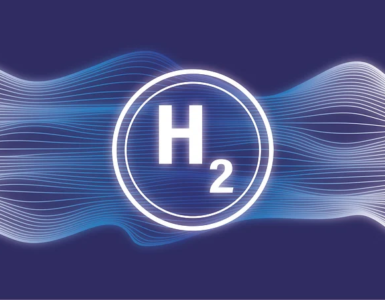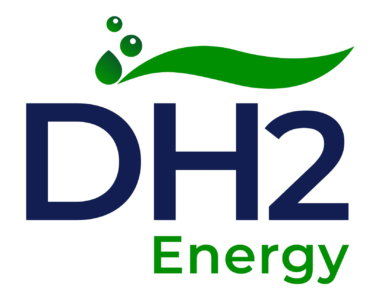The Colombian Hydrogen Strategy – what are its targets? – Dr. Julio C. Garcia-Navarro.
On September 30th the Colombian government launched the Colombian National Hydrogen Strategy. I had the pleasure to read an early draft of the Colombian hydrogen strategy some time ago and to provide comments, and I find that the Colombians’ commitment to decarbonize is truly something worthy of being replicated in other parts of the world. I am happy to finally being able to congratulate the Colombian government for this milestone, which means that now Colombia joins Chile as the only countries in Latin America with a published National Hydrogen Strategy.
At the forefront of decarbonization
On the one hand, it could be a bit of an uphill battle for Colombia to adopt a decarbonization pathway (at least via the hydrogen route) because it means that Colombia would rely on technology imports on the short-term. Importing hydrogen technology is a bit risky at the moment partly because there is no large-scale manufacturing of some hydrogen technologies including fuel cells and electrolyzers, meaning that committing to demonstration projects at this point in time could end up costing a bit more than if there were domestic technology development in the areas of hydrogen production and consumption.
On the other hand, Colombia has a higher share of renewables in its energy mix, which has positive implications on the level of “greenness” of hydrogen produced by electrolysis. As a comparison, the figure below shows the decarbonization status of different countries, all of which have developed a national hydrogen strategy (here is the link to my analysis of the British strategy). If the first electrolyzer projects in each country (out of their respective targets that are in the GW-scale) are grid-connected (which they are likely to be), the produced hydrogen from electrolysis would be 3 times as carbon intensive in Germany and 2 times as carbon intensive in the UK than in Colombia. This goes to show that Colombia can presently offer a more favorable environment to produce low-carbon hydrogen, so the launching of their national strategy is definitely a step in the right direction.
🔥 What about we co-host a webinar? Let's educate, captivate, and convert the hydrogen economy!
Hydrogen Central is the global go-to online magazine for the hydrogen economy, we can help you host impactful webinars that become a global reference on your topic and are an evergreen source of leads. Click here to request more details

What are the targets of the Colombian hydrogen strategy?
Here is a summary of the targets set by the Colombian hydrogen strategy towards 2030:
- Hydrogen supply
- Green hydrogen: 1 GW of electrolysis capacity. They argue that the renewable energy potential in some parts of the country (for example in La Guajira in the north east of Colombia) can lead to an LCOH of 1.7 USD/kg, which is a bit higher than the target by the US Hydrogen Shot (1 USD/kg, arguably to be expected due to reductions in CAPEX but this is another discussion) but in line with the estimations by the Chilean Hydrogen Strategy (1.3-1.8 USD/kg by 2030).
- Blue hydrogen: 50 kt/year, which is 0.3 GW of equivalent electrolysis installed capacity.
- Hydrogen demand
- Industry: the target is to incorporate 40% of low-carbon hydrogen in the current industrial consumption (mining, refining, feedstock in e.g., fertilizer production).
- Mobility: they are aiming at having between 1.500 and 2.000 LDVs (light-duty vehicles) and 1000-1500 HDVs (heavy-duty vehicles) in circulation, alongside 50-100 HRSs (hydrogen refueling stations). This target is a bit conservative when compared to countries such as France (20.000-50.000 LDVs, 800-2.000 HDVs, and 400-1.000 HRSs), but we can be sure that Colombia is likely to turn their target into a reality, considering that the Colombian city of Bogota owns of one of the largest electric bus fleets in the world.
The figure below shows a summary of the targets of the Colombian Hydrogen Strategy towards 2030.

Bottom line
As may be deducted from the tone of this article, I am both excited about the Colombian Hydrogen Strategy, and confident that Colombia will be a key player in the development of an international hydrogen economy. Being Latin American myself, I realize that Latin America holds some advantages with respect to other continents when developing hydrogen economies. For example, some countries in Latin America have higher degrees of decarbonization of their electricity (partly due to the massive hydropower resource in rives like the Paraná) and an even higher renewable energy potential, which now can be realized due to the relatively low prices of Solar PV and exported via the production of green hydrogen. I believe that Colombia has the right priority when thinking about hydrogen (i.e., to decarbonize their industry) but I still think that Chile and Australia hit the nail better in the head with their ambition to focus first on developing an export chain of low-carbon hydrogen. I am hopeful that the Latin American hydrogen momentum is picked up by other countries and look forward to reading more hydrogen strategies from my fellow Latin Americans.
READ the latest news shaping the hydrogen market at Hydrogen Central
About the author
Dr. Julio C. Garcia-Navarro is a Hydrogen Project Coordinator at New Energy Coalition. He has worked in the hydrogen industry for nearly a decade, on topics such as hydrogen electrolysis, compression, and transportation. Besides hydrogen, he is passionate about Renewable Energy Systems and the Internet of Things.
Copyright © Hydrogen Central. All Rights Reserved.








